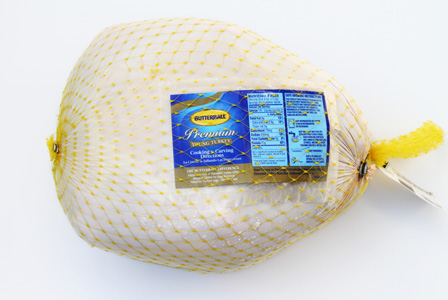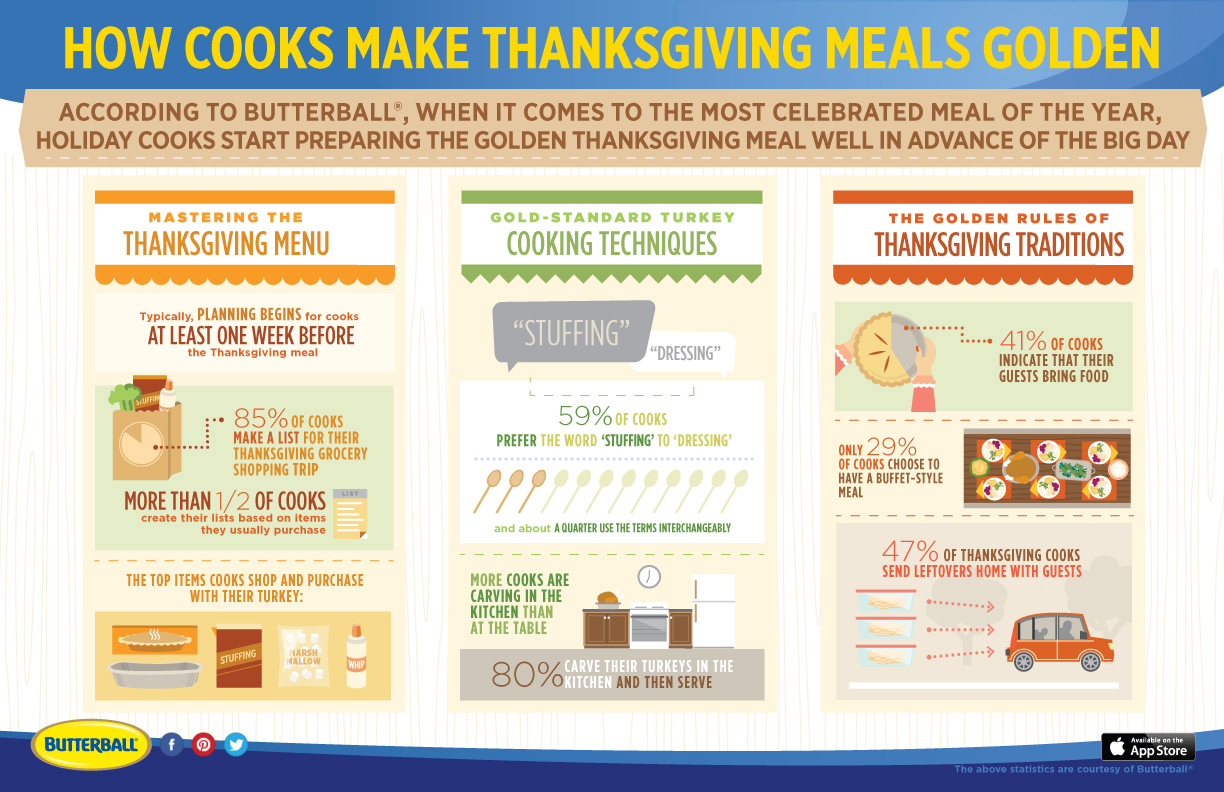
For thousands of home cooks with turkey dilemmas, Butterball's Turkey Talk-Line comes to the rescue during the holidays. Here is a behind-the-scenes peek at this 29-year-old tradition.
Turkey problem? Call Butterball's expertsFor 27 years, Carol Miller has been on the helpful end of Butterball's Turkey Talk-Line.
On the other end of the line: home cooks in turkey turmoil. There are giblet mysteries to solve and questions about stuffing, timing and thawing. It's safe to say that Miller and her fellow turkey talkers know all there is to know about the holiday bird.
Miller, who has a degree in home economics education from Northern Illinois University, has been picking up the phone almost from the start. The Butterball Turkey Talk-Line opened 29 years ago and employed six home economists who took 11,000 phone calls in the first year. Now, more than 50 Butterball experts respond to that many calls on Thanksgiving Day alone.
Butterball's hotline, 1-800-BUTTERBALL, is open weekdays from 8 a.m.-8 p.m. CST in November and December. Calls are answered in English and Spanish.
"This morning I've taken 10 calls, varying from, 'How long is it going to take to thaw my 20-pound turkey?' to, 'Is the turkey that I bought at Easter still going to be good?' " Miller says.
People can also email dilemmas to talkline@butterball.com, live chat at butterball.com or ask questions on Twitter or Facebook. Overall, about a million people get in touch with Butterball during the holidays, Miller says. This year, they've updated their Talk-Line space to include a social media center where customers can ask questions in real time on Facebook and Twitter or live chat one of the turkey experts on the website. The walls are adorned with flat-screen TVs displaying the live feeds from Facebook and Twitter, roasting schedules, recipes and more. They've also added Pinterest to the mix this year.
“I'm 45 and going to cook my first turkey.„According to Miller, the number one question after all these years is still about thawing. The easiest way to thaw a turkey is in the refrigerator, and the rule of thumb is one day in the fridge for every 4 pounds of turkey, Miller says.
Miller, who consults a 4-inch-thick binder with roughly 70 tabs (though the experts also use laptops), says she's received a round of applause from relatives in the background of a call on Thanksgiving Day. But not everyone who the experts help is calling in a panic.
"I [once] got a call from a woman just when the line opened, and she said, 'I'm 45 and going to cook my first turkey. My mom and my mother-in-law said no more, it's your turn.' She needed the basic information that people needed in 1981."
"It's better if you call us early than if you call us on Thanksgiving Day," Miller says. "On Thanksgiving Day, you probably have a problem."
In addition to the newly renovated call center, there's one more key development for the Butterball Turkey Talk-Line. If you have an iPad, iPhone or iPod Touch, you can download the Butterball Cookbook Plus app, where you'll find recipes, how-to videos and more.
Butterball Turkey Talk-Line
In addition to telling us how the Talk-Line works, Miller also gave us a little behind-the-scenes glimpse. Read her interview below to find out what really goes on (and why no question you have is a stupid question).
SheKnows: What's Thanksgiving Day like for the Turkey Talk-Line?Carol Miller: I am one of 50 people who man the lines, and Thanksgiving is the culmination of our season.
Each one of us is here for eight hours that day. It is a crazy day. Our office [in Naperville, Illinois] is a great big wide-open room, probably about the size of a basketball court. You can imagine what it sounds like in here when you get 35 to 40 people talking as fast as they can. The lines are constantly busy. We probably take 11,000-plus calls on that day.
SK: How do you prepare for these two months?CM: We go to what we affectionately call Butterball University. The newest staff members go to Turkey 101, and I am one of two teachers for that course. Each of the staff members is assigned a particular method of roasting a turkey. They're not using recipes; they're using a method… such as the open-pan method, covered roasting pans, oven-cooking bags.
We do about nine or 10 different methods and at the end of the day, everybody lines up their turkey and we compare roasting methods. It really helps to be able to do and see, so when you get a call, you've seen it in the test kitchen.
Everyone who is on the line is a food professional, and what I mean by that is they either have a degree in home economics or they are dieticians, so they come to the talk line with a food background already.
SK: Butterball still cooks a turkey in a microwave in its test kitchen. Does this method really work?CM: When I started 27 years ago, microwaves were the new hot thing. They were huge and people were not used to using them, so the Butterball test kitchen had developed a method for cooking a turkey in the microwave. It has to be a turkey that's 12 pounds or less.
People still do it and we do it in our test kitchen. It's excellent, and you can't really tell the difference. Microwaves have gotten smaller and people are not cooking turkeys in them as much as they used to, so that call has changed.
SK: You must get some oddball questions, right?CM: We do get callers who just don't cook a lot. We had a young woman who had a large turkey and a small apartment oven. Her concern was that the turkey was going to rise in the oven. Turkeys do not rise. She was very glad to know that they actually get a tiny bit smaller.
SK: What helpful tips have you collected over the years?CM: Many roasting directions say to put a rack under the turkey, and that gets the turkey off the bottom of the pan so that the air can circulate around. If you don't have a rack that will fit in the pan that you're using, get out four or five carrots and lay them in the bottom of the pan. Put the turkey on the carrots. This keeps the turkey off the bottom of the pan and the carrots will flavor the broth a little.
Another tip is to use a meat thermometer and make sure it's accurate. Most people have a meat thermometer in the back of their drawer that they haven't used since last Thanksgiving. To test it (for accuracy), boil some water. Make sure that when you put it in the boiling water it reads 212 degrees. Then you'll be able to test that turkey.
You can't look at a turkey to see if it's done. You really need to take the internal temperature (Butterball advises that a turkey is done when the thermometer reads 180 degrees F deep in the thigh, 165 degrees F in the center of the stuffing, if turkey is stuffed.).
SK: Do you recall the first time you made a turkey?CM: I'm always really honest about this. I have a degree in home economics education… but I was like that 45-year-old woman that I described: I always went to Thanksgiving at my mom's or my mother-in-law's. So it was not until I went in as a freshman to the Butterball test kitchen that I did hands-on roasting and put a turkey in the oven.

Celebrity chefs' Thanksgiving menus
Turkey for two
Delicious turkey leftover recipes
没有评论:
发表评论